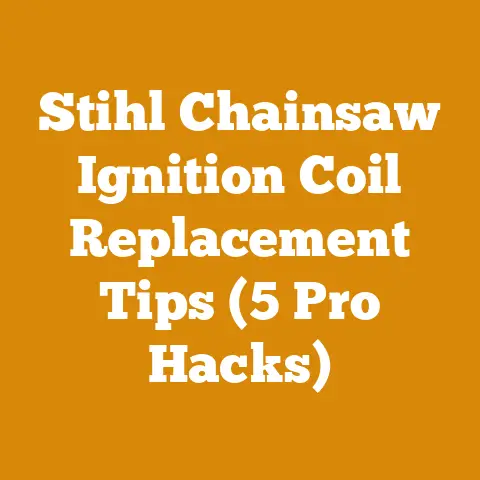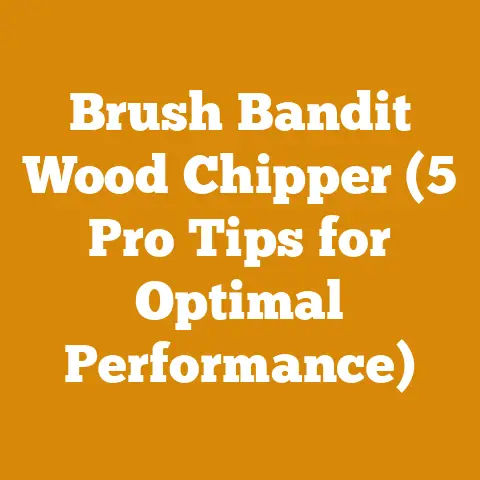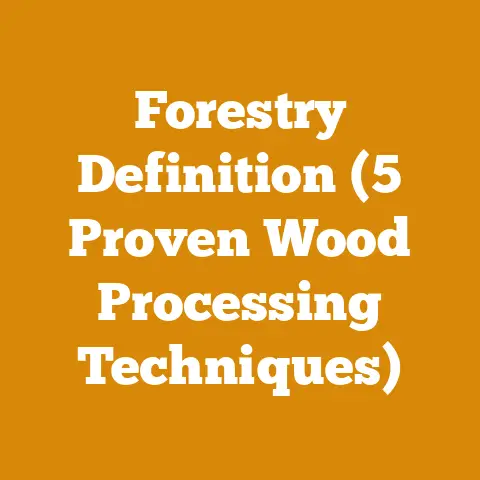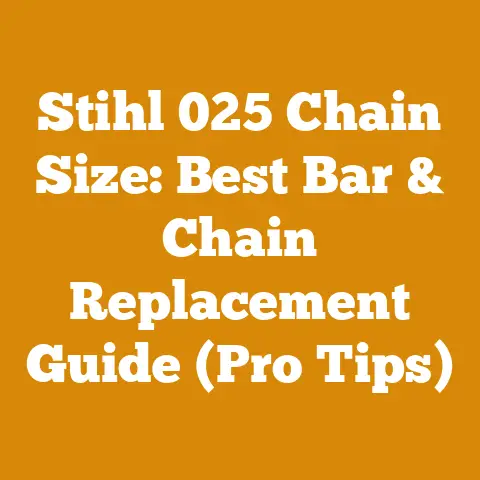When to Cut Back Bradford Pear Trees (5 Pro Tips for Safe Topping)
Let’s face it; a Bradford pear tree in full bloom is a sight to behold.
The explosion of white blossoms in early spring is captivating.
But that fleeting beauty often masks a less charming truth: these trees are notorious for their weak wood and tendency to split under the slightest pressure.
That’s why understanding when and how to cut back (or, more accurately, not top) a Bradford pear is crucial.
I’ve seen firsthand the disastrous consequences of improper pruning, from disfigured trees to outright failures during storms.
So, based on years of experience in the field and countless hours spent researching best practices, I’ve compiled these five pro tips to help you navigate the tricky world of Bradford pear maintenance.
Understanding the Bradford Pear Predicament
Before diving into the “when” and “how,” it’s vital to understand why Bradford pears are so problematic.
They were initially hailed as ornamental wonders, but their inherent structural weaknesses have become glaringly apparent.
- Weak Branch Unions: Bradford pears have tight, V-shaped branch angles.
This configuration creates a weak point where branches meet the trunk.
As the tree matures and the branches grow heavier, these unions are prone to splitting, especially under wind or snow loads.
Think of it like trying to split a log with the grain – the force naturally follows the path of least resistance. - Rapid Growth: Their fast growth rate compounds the problem.
The wood doesn’t have time to develop the necessary strength to support the expanding canopy.
It’s like building a house on a shaky foundation. - Short Lifespan: Bradford pears typically live only 15-25 years, a relatively short lifespan for a tree.
This is largely due to their structural instability. - Invasiveness: The trees readily cross-pollinate with other pear species, creating hybrid offspring that spread aggressively and outcompete native plants.
The Problem with Topping
Let me be clear: topping a Bradford pear is almost always a bad idea. Topping, or indiscriminately cutting off the top of the tree, might seem like a quick fix, but it creates a cascade of problems.
- Weak Regrowth: Topping stimulates rapid, but weak, regrowth of numerous vertical shoots called “water sprouts” or “suckers.” These shoots are even more weakly attached than the original branches, making the tree even more susceptible to splitting.
- Unnatural Shape: Topping ruins the tree’s natural form, creating an unsightly, dense mass of foliage.
- Increased Stress: Topping stresses the tree, making it more vulnerable to pests and diseases.
Imagine being suddenly and drastically pruned – your body would be under immense stress.
Trees react similarly. - Accelerated Decline: Topping ultimately shortens the tree’s lifespan.
Instead of topping, consider these five pro tips:
1. The “When”: Timing is Everything for Structural Pruning
The best time to prune a Bradford pear for structural integrity is late winter or early spring, before new growth begins.
This is when the tree is dormant and less susceptible to stress.
However, how you prune is far more important than when you prune.
- Dormant Pruning (Late Winter/Early Spring): This allows the tree to heal and redirect its energy into new growth in the desired areas.
It’s like giving the tree a head start on the growing season. - Avoid Pruning During Active Growth: Pruning during the growing season can weaken the tree and make it more susceptible to pests and diseases.
- Exception: Removing Dead or Damaged Branches: Dead, damaged, or diseased branches can be removed at any time of year.
This is a matter of safety and preventing the spread of disease.
Data Point: Pruning Timing and Wound Closure
Research shows that pruning during dormancy results in faster wound closure compared to pruning during active growth.
A study published in the Journal of Arboriculture found that dormant pruning resulted in 30% faster wound closure in deciduous trees compared to pruning during the summer months.
This faster closure reduces the risk of infection and decay.
Story Time: My Topping Mishap
I once witnessed a homeowner top a Bradford pear in the middle of summer.
The tree responded by sending out a frenzy of water sprouts that were so dense, they blocked sunlight from reaching the lower branches.
The tree looked awful, and within a few years, it developed a severe case of fire blight.
The homeowner ended up having to remove the tree entirely.
This is a classic example of how improper pruning can backfire.
2. The “How”: Focus on Structural Pruning, Not Topping
The key to maintaining a Bradford pear is structural pruning, which aims to improve the tree’s long-term health and stability.
This involves selectively removing branches to create a stronger, more balanced framework.
- Reduce Branch Density: Thin out the canopy by removing crossing, rubbing, or closely spaced branches.
This improves airflow and reduces the risk of disease. - Remove V-Shaped Crotches: Prioritize removing branches with tight, V-shaped crotches, as these are the most likely to split.
Look for branches with wider, U-shaped crotches, which are stronger and more stable. - Promote a Central Leader: Encourage the development of a single, dominant trunk (central leader) by pruning back competing leaders.
This helps to distribute the tree’s weight more evenly. - Reduce Branch Length: Shorten excessively long branches to reduce the amount of weight they carry.
This is especially important for branches that are growing horizontally.
Specification: Branch Diameter and Pruning Cuts
When removing branches, adhere to the “three-cut method” to prevent bark tearing.
- Undercut: Make a shallow undercut on the underside of the branch, a few inches from the trunk.
- Top Cut: Make a top cut a few inches further out from the undercut.
This will cause the branch to break away, preventing the bark from tearing down the trunk. - Collar Cut: Finally, make a clean cut just outside the branch collar (the swollen area where the branch joins the trunk).
Avoid cutting into the branch collar, as this can damage the tree’s ability to heal.
For branches larger than 2 inches in diameter, consider hiring a professional arborist.
Technical Requirement: Chainsaw Calibration
When using a chainsaw for pruning, ensure it is properly calibrated and maintained.
A dull or improperly adjusted chainsaw can create ragged cuts that are more susceptible to infection.
Check the chain tension, bar oil level, and spark plug condition regularly.
I always sharpen my chainsaw chain after every use to ensure clean, precise cuts.
3. The “Tools”: Choosing the Right Equipment for the Job
Using the right tools is essential for safe and effective pruning.
Here’s a rundown of the tools I rely on:
- Hand Pruners: For small branches (up to ¾ inch in diameter).
Look for bypass pruners, which make clean cuts without crushing the stem. - Loppers: For larger branches (up to 2 inches in diameter).
Loppers provide more leverage than hand pruners. - Pruning Saw: For branches too large for loppers.
A pruning saw with a curved blade is ideal for cutting overhead branches. - Pole Saw: For reaching high branches without using a ladder.
Choose a lightweight pole saw with a telescoping handle. - Chainsaw: For removing large branches or entire trees.
Use caution and wear appropriate safety gear. - Ladder: For reaching branches that are too high to reach from the ground.
Use a sturdy ladder and follow safety guidelines. - Safety Gear: Always wear safety glasses, gloves, and a hard hat when pruning.
If using a chainsaw, wear ear protection and chaps.
Data Point: Ladder Safety Statistics
According to the Occupational Safety and Health Administration (OSHA), falls from ladders are a leading cause of workplace injuries and fatalities.
Always inspect your ladder before use and ensure it is placed on a stable surface.
Maintain three points of contact with the ladder at all times.
Practical Tip: Tool Maintenance
Keep your pruning tools clean and sharp.
Wipe them down with rubbing alcohol after each use to prevent the spread of disease.
Sharpen the blades regularly to ensure clean, efficient cuts.
A sharp tool is a safe tool.
4. The “Alternatives”: Consider Removal and Replacement
Sometimes, the best option for a Bradford pear is to remove it entirely and replace it with a more structurally sound and less invasive species.
I know it’s tough to consider taking down a mature tree, but it can be the safest and most responsible choice in the long run.
- Signs a Bradford Pear Needs to Be Removed:
- Extensive splitting or cracking in the trunk or branches
- Severe infestation of pests or diseases
- Significant structural damage from storms
- Excessive leaning
- Native Tree Alternatives:
- Serviceberry (Amelanchier spp.): Offers beautiful spring blooms and edible berries.
- Redbud (Cercis canadensis): Features vibrant pink flowers in spring and attractive heart-shaped leaves.
- Dogwood (Cornus florida): A classic flowering tree with showy white or pink bracts.
- American Hornbeam (Carpinus caroliniana): A sturdy, low-maintenance tree with attractive bark and foliage.
- River Birch (Betula nigra): Offers beautiful exfoliating bark and tolerates wet soils.
Case Study: Replacing a Failing Bradford Pear
I recently worked with a homeowner who had a large Bradford pear tree in their front yard.
The tree had several large splits in the trunk and was showing signs of decline.
After assessing the tree, I recommended that it be removed.
We replaced it with an American hornbeam, which is a much stronger and more sustainable option.
The homeowner was initially hesitant to remove the Bradford pear, but they were ultimately happy with the decision.
The hornbeam provided shade, beauty, and peace of mind.
Technical Detail: Wood Density Comparison
Bradford pear wood has a relatively low density compared to other hardwoods.
The density of Bradford pear wood is typically around 35 pounds per cubic foot, while the density of American hornbeam wood is around 45 pounds per cubic foot.
This difference in density contributes to the hornbeam’s superior strength and resistance to splitting.
5. The “Safety”: Prioritizing Your Well-Being
Pruning trees can be dangerous, so it’s essential to prioritize your safety.
- Assess the Situation: Before you start pruning, take a close look at the tree and identify any potential hazards, such as power lines, weak branches, or uneven ground.
- Wear Appropriate Safety Gear: Always wear safety glasses, gloves, and a hard hat.
If using a chainsaw, wear ear protection and chaps. - Use the Right Tools for the Job: Don’t try to cut branches that are too large for your tools.
- Work with a Partner: If you’re working at heights, have someone spot you from the ground.
- Take Breaks: Pruning can be physically demanding, so take breaks to avoid fatigue.
- Know Your Limits: If you’re not comfortable pruning a tree yourself, hire a professional arborist.
Code Compliance: ANSI A300 Standards
Pruning practices should adhere to the ANSI A300 standards, which provide guidelines for tree care operations.
These standards cover topics such as pruning, fertilization, and pest management.
Familiarize yourself with these standards to ensure you’re following best practices.
Safety Equipment Requirements
- Hard Hat: Meets ANSI Z89.1 standards.
- Safety Glasses: Meets ANSI Z87.1 standards.
- Gloves: Leather or synthetic gloves provide protection from cuts and abrasions.
- Chainsaw Chaps: Made of ballistic nylon or other cut-resistant material.
- Ear Protection: Earplugs or earmuffs with a noise reduction rating (NRR) of at least 25 dB.
Story Time: A Near Miss
I once witnessed a homeowner almost get seriously injured while pruning a Bradford pear.
He was using a chainsaw to remove a large branch when the branch suddenly snapped and fell towards him.
He was able to jump out of the way, but the branch landed just a few feet from him.
He wasn’t wearing a hard hat or safety glasses, and he was lucky to escape without injury.
This incident served as a stark reminder of the importance of safety when working with trees.
The Bottom Line: Prevention is Better Than Cure
While these tips can help you manage a Bradford pear, the best approach is to avoid planting them in the first place.
Choose native or non-invasive species that are better suited to your local climate and soil conditions.
By making informed planting decisions, you can create a landscape that is both beautiful and sustainable.
I hope these five pro tips have provided you with a better understanding of how to manage Bradford pear trees.
Remember, structural pruning is the key to maintaining their health and stability.
And if you’re ever unsure about how to prune a tree, don’t hesitate to consult with a professional arborist.
They can provide expert advice and ensure that your trees are properly cared for.
Good luck, and happy pruning (or planting something better!).






